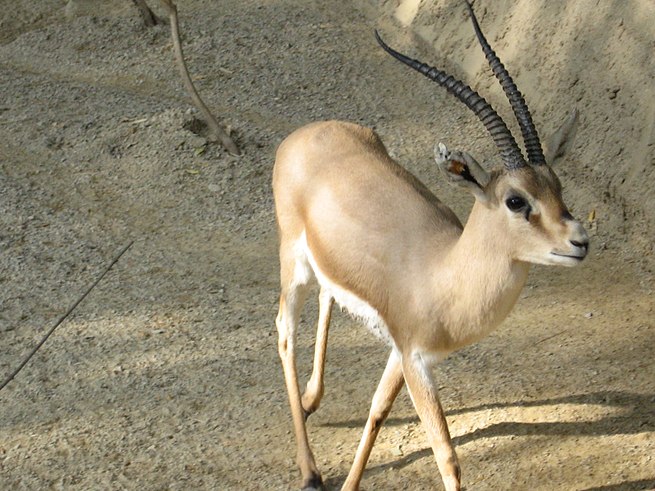Main Difference
The main difference between Gazelle and Antelope is that the Gazelle is a genus of mammals and Antelope is a term referring to many even-toed ungulate species.
-
Gazelle
A gazelle is any of many antelope species in the genus Gazella. This article also deals with the six species included in two further genera, Eudorcas and Nanger, which were formerly considered subgenera of Gazella. A third former subgenus, Procapra, includes three living species of Asian gazelles.
Gazelles are known as swift animals. Some are able to run at bursts as high as 100 km/h (60 mph) or run at a sustained speed of 50 km/h (30 mph). Gazelles are found mostly in the deserts, grasslands, and savannas of Africa; but they are also found in southwest and central Asia and the Indian subcontinent. They tend to live in herds, and eat less coarse, easily digestible plants and leaves.
Gazelles are relatively small antelopes, most standing 60–110 cm (2–3.5 ft) high at the shoulder, and are generally fawn-colored.
The gazelle genera are Gazella, Eudorcas, and Nanger. The taxonomy of these genera is confused, and the classification of species and subspecies has been an unsettled issue. Currently, the genus Gazella is widely considered to contain about 10 species. Four further species are extinct: the red gazelle, the Arabian gazelle, the Queen of Sheba’s gazelle, and the Saudi gazelle. Most surviving gazelle species are considered threatened to varying degrees. Closely related to the true gazelles are the Tibetan and Mongolian gazelles (species of the genus Procapra), the blackbuck of Asia, and the African springbok.
One widely familiar gazelle is the African species Thomson’s gazelle (Eudorcas thomsoni), which is around 60 to 80 cm (24 to 31 in) in height at the shoulder and is coloured brown and white with a distinguishing black stripe. The males have long, often curved, horns. Like many other prey species, Tommies and springboks (as they are familiarly called) exhibit a distinctive behaviour of stotting (running and jumping high before fleeing) when they are threatened by predators, such as cheetahs, lions, African wild dogs, crocodiles, hyenas, and leopards.
-
Antelope
An antelope is a member of a number of even-toed ungulate species indigenous to various regions in Africa and Eurasia. Antelopes comprise a wastebasket taxon (miscellaneous group) within the family Bovidae, encompassing those Old World species that are not cattle, sheep, buffalo, bison, or goats; even so, antelope are generally more deer-like than other bovids. A group of antelope is called a herd.
-
Gazelle (noun)
An antelope of either of the genera Gazella (mostly native to Africa) or Procapra (native to Asia), capable of running at high speeds for long periods.
-
Antelope (noun)
Any of several African mammals of the family Bovidae distinguished by hollow horns, which, unlike deer, they do not shed.
-
Antelope (noun)
The pronghorn, Antilocapra americana.
-
Gazelle (noun)
a small, slender antelope that typically has curved horns and a fawn-coloured coat with white underparts, found in open country in Africa and Asia.
-
Antelope (noun)
a swift-running deerlike ruminant with smooth hair and upward-pointing horns, of a group native to Africa and Asia that includes the gazelles, impala, gnus, and elands.
-
Antelope (noun)
another term for pronghorn

